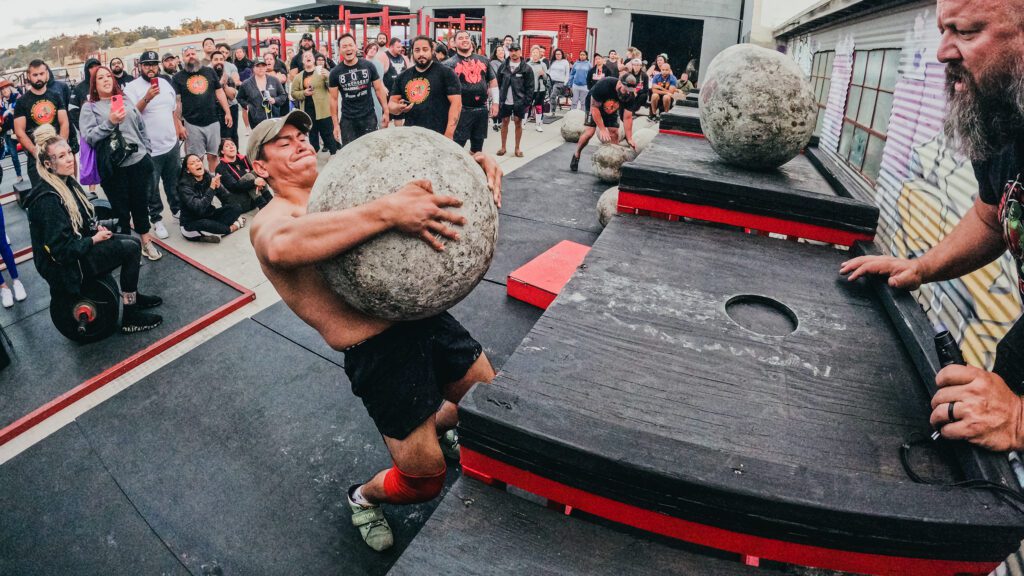
Large globe-shaped stones are made of concrete and more recently steel. Stones are picked up, generally from the ground, and placed on a platform, over a bar, or to the shoulder. There can be multiple stones of varying sizes and weights. They can be loaded to different heights. It can also be a max rep variation.
ATLAS STONES: (SPLIT TIME)
– 1 attempt to lift as many of the stones as possible in the fastest time.
– Typically provided a 60 or 90-second time limit.
– Platform height between 42” to 56”.
– 4 to 5 atlas stones.
– Stone diameter and weight may vary.
– Stones will be placed at the base of the platforms.
– Stones are usually loaded in ascending order.
– The stones must be loaded in a controlled manner. If a stone falls off the platform during the attempt, the athlete must replace the stone before proceeding to the next heaviest stone.
– Split times will be taken for each stone.
– Athlete starts with their hands on the platform or a short distance from the platform at the start of the event.
– Equipment Allowed: Belt with buckle to the back, Tacky, Chalk, Knee wraps or sleeves, Fore-arm sleeves
– Equipment NOT Allowed: Belt buckle to the front or an object in the belt to provide a “shelf”. No built-up shoes to provide extra height.
Additional Atlas Stone Loading Options
Atlas stones are a classic implement in Strongman, known for their round shape and heavy weight. These stones can be loaded in various ways, presenting different challenges and testing the competitors’ strength, technique, and endurance. Competitors can load onto a platform, over a bar, to the shoulder, or onto something that can then be pulled, dragged, lifted, rolled, or carried for a distance.

Atlas Stone Load to Platform
The Atlas Stone Load to Platform event involves lifting heavy, round Atlas stones and placing them onto a designated platform. The consistent shape and varying weights of the stones require competitors to use strength and precise technique. [Read more…]

Atlas Stone Load Over a Bar
The Atlas Stone Load Over a Bar event requires competitors to lift Atlas stones and throw them over a bar set at a specific height. This test of explosive strength and control demands both power and accuracy. [Read more…]

Atlas Stone Load to Shoulder
In the Atlas Stone Load to Shoulder event, athletes must lift Atlas stones from the ground and position them securely on their shoulders. This event challenges the competitors’ overall strength, stability, and balance. [Read more…]

Atlas Stone Load to Sled
The Atlas Stone Load to Sled event involves lifting Atlas stones and placing them onto a sled. Once loaded, the sled is often pulled or pushed, combining strength and endurance in a dynamic challenge. [Read more…]

Atlas Stone Load to Wheelbarrow
The Atlas Stone Load to Wheelbarrow event requires competitors to lift Atlas stones and load them into a wheelbarrow. This event tests not only strength and technique but also balance and coordination as the wheelbarrow is maneuvered. [Read more…]

Atlas Stone Carry and Load
In the Atlas Stone Carry and Load event, athletes must lift an Atlas stone and carry it over a specified distance before loading it onto a platform or designated area. This event combines the challenges of lifting and carrying, testing both strength and stamina. [Read more…]


